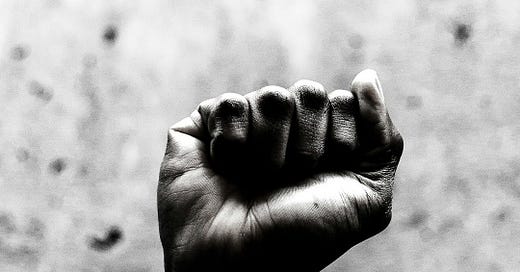Today’s Topic Highlights:
Multiple studies have found a close link between grip strength and health span in seniors.
“…grip strength is largely consistent as an explanator of concurrent overall strength, upper limb function, bone mineral density, fractures, falls, malnutrition, cognitive impairment, depression, sleep problems, diabetes, multi-morbidity, and quality of life.” - Clinical Intervention In Aging
Some signs of declining grip strength include difficulty in opening jars, increased incidence in unintentionally dropping objects, loss of finger coordination and dexterity, and reduction in overall finger joint range of motion.
Start a strength training program. Any form of strength/resistance training, done correctly, is beneficial to the hands and fingers. Also stretch the fingers and wrists every day to keep them flexible and preserve joint range of motion.
Practice opening jars with both your dominant and non dominant hands.
How strong is your grip? Few people ask themselves this question. Even fewer actively work on improving their grip strength. If you are 60 or older, now is the time to start. Several recent studies have found a close link between grip strength and health span in seniors.
A widely cited 2019 study from the journal Clinical Interventions In Aging is largely responsible for bringing this to mainstream awareness. The study’s attention grabbing abstract states that “…evidence is provided herein that shows grip strength is largely consistent as an explanator of concurrent overall strength, upper limb function, bone mineral density, fractures, falls, malnutrition, cognitive impairment, depression, sleep problems, diabetes, multi-morbidity, and quality of life.” 1
Another study published in the Journal of the American Medical Association (JAMA) found that hand grip strength measured during midlife predicts functional limitations in old age. This indicates that quality of life trajectories can be mapped out decades in advance of post-retirement life. 2
Perhaps most importantly is 2024 research from Frontiers in Public Health. Their article concluded that there is a dose-effect relationship between grip strength and physical health in quality of life. The study indicated that the grip strength of older adults needed to be greater than certain threshold values to maintain good quality of life. The threshold values they provide are the first scientific attempts to establish minimum general grip strength standards based on age and gender. 3
Considering the growing body of research into this topic, along with widespread interest in longevity, it seems likely that grip strength will soon become a much bigger fitness topic for older adults. Exercise training knowledge for the senior population is sorely lacking compared to what is available for athletic training and weight loss. Grip strength would be an excellent starting point for filling this void.




